|
Conception |
|
How did it happen?
Behold the handmaid of the Lord; be it done to me according to thy word.
At this point, the Holy Spirit enters the Virgin and conception takes
place. But how?
Debating this problem whiled away the time nicely at the council of
Nicaea. A 'heretic called Aelian' got himself into trouble there by
suggesting that conception was effected through the Virgin's ear. (See
the entry on ears in the Penguin Dictionary of Symbols for more on this.)
Clearly the usual route would be inappropriate and unseemly, and rather difficult for
artists in any case. Fra Filippo Lippi, in his wonderful Annunciation at the National
Gallery, London, came up with this novel alternative:
|
|
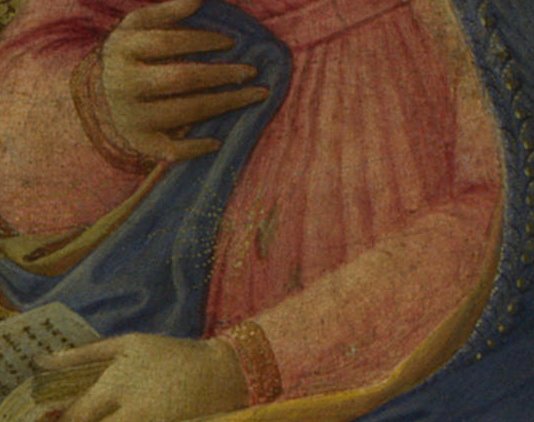
|
there is a small tear in Mary's robe, through which
the Holy Spirit has passed. If it's not easy to see here, go to the National
Gallery and have a look at the real thing.
Now let's pull out and see the whole painting.
The Holy Spirit appears in front of the Virgin in the form of a dove; the
hand of God is visible at the top of the picture. So why a dove?
|
|
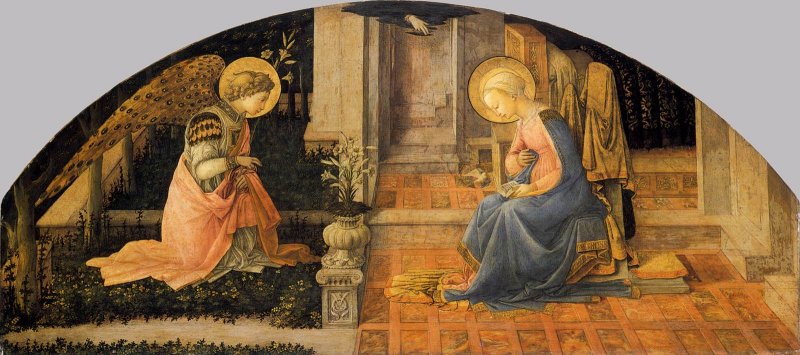
|
|
The Holy Spirit
The symbol for the Holy Spirit is a dove, and the dove is a familiar
element in Annunciation images, and for images of the baptism of Christ. As with angelic wings, this could evoke
uncomfortable memories of Pagan mythology. There the dove was associated with
Aphrodite and with physical rather than spiritual love. By the time of the
Council of Ephesus this connection had faded, and the dove had become a symbol
of purity. In Annunciation images it is often accompanied
by golden rays, as in this painting by Fra Angelico. This may be a
reference to the Apocryphal Gospel of the Nativity of Mary.
Referring to Gabriel, this tells us that 'going
in, he filled the chamber where she was with a great light'.
In other
versions, such as the one by van Cleve below, the dove hovers above the
Virgin.
|
|
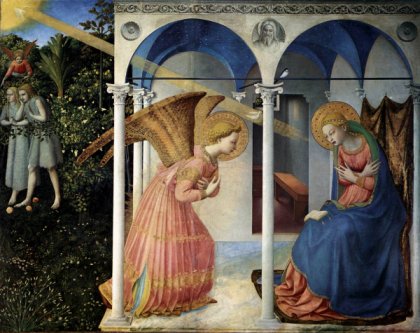
Fra Angelico
Prado, Madrid
|

Joos van Cleve
Metropolitan Museum, New York
Detail
|
|
Tiny babies and geometry
Two interesting alternatives appear in these versions by Roger Campin
and Piero della Francesca. Campin substitutes a tiny baby carrying a
cross for the dove; Piero simply uses the geometry of the building to
suggest movement from the hands of God to the Virgin.
|
|
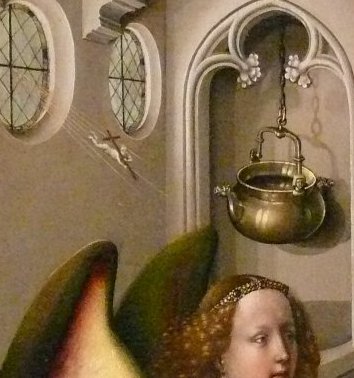
Detail from the Merode Altarpiece,
Metropolitan Museum of Art, New York.
Full image on this page.
|
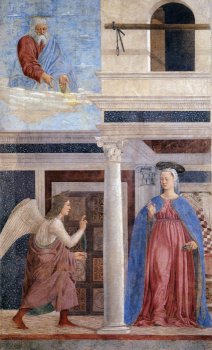
Fresco, San
Francesco, Arezzo
|
|
Annunciation
page 1
|
Home
page
|
|
|
|
|





